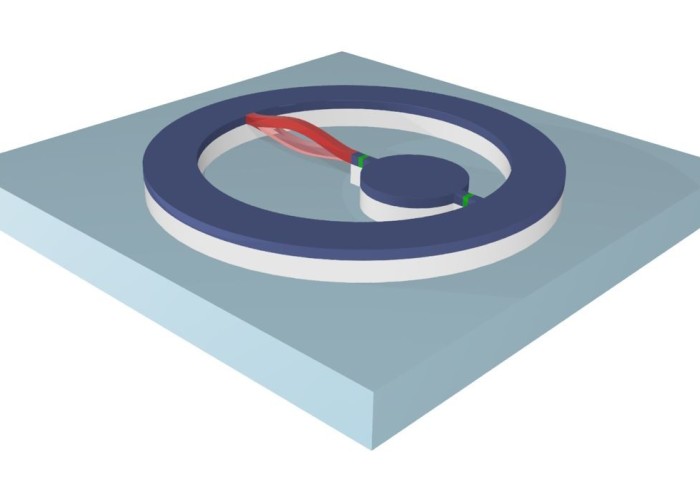How to test the limits of quantum mechanics

Future experiments at low temperature offer a route to test the limits of applicability of quantum mechanics.
Quantum physics has long provided humanity with an elegant framework for understanding the microscopic world. However, quantum phenomena do not exist in our everyday lives – which is arguably a relief! Many factors contribute to the transition between the quantum and classical regimes, but is there a fundamental mechanism that results in this transition? And how exactly does a wavefunction consisting of multiple possibilities collapse into one definite outcome?
Objective collapse theories predict mechanisms that go beyond conventional quantum mechanics Lydia Kanari-Naish
Numerous models, collectively referred to as objective-collapse theories, have been suggested in the hope of addressing these outstanding fundamental questions. But testing these theories remains experimentally challenging. A group of researchers at Imperial College London and Lancaster University have published a new approach to investigate these objective-collapse theories in the lab.
“Objective collapse theories predict mechanisms that go beyond conventional quantum mechanics; and so, their spirit and interpretation is hotly debated among the scientific community leading to numerous theories,” explains lead author Lydia Kanari-Naish from Imperial College London.
One such collapse model has been proposed by Nobel Laureate Sir Roger Penrose. “Penrose has suggested that wavefunction collapse might even be because of the conflict between the very nature of quantum mechanics and general relativity!” describes project co-author Jack Clarke from Imperial. But can this theory be experimentally tested?
The researchers’ method takes advantage of the “displacemon”, an electro-mechanical device consisting of a mechanical resonator connected to superconducting qubit. By manipulating the qubit, they propose a technique to probe for deviations from standard quantum theory in a way that could be explained by objective collapse. The proposal is published today in AVS Quantum Science, as part of a special edition celebrating the rich and diverse work of Sir Roger Penrose, who won the Physics Nobel Prize in 2020 for his work in general relativity.
While there has been much progress in constraining the strength of these models, further experiments are needed to illuminate the quantum-to-classical boundary. “Indeed, these future experiments offer exciting promise to probe quantum mechanics at bigger and bigger scales,” says Michael Vanner, Principal Investigator of the Quantum Measurement Lab at Imperial College London.
The displacemon provides a new route to testing collapse models by leveraging experimental advances made in cryogenics and superconducting technologies. Central to the displacemon device is a mechanical resonator which oscillates up and down like a miniature guitar string and is incorporated into a superconducting qubit. This sweeping motion interacts with a magnetic field in a way that links the properties of the qubit device and the resonator, with the action of one affecting the other. The architecture of the device lends itself well to creating a quantum superposition of the string vibrations.

“The displacemon is not only a tool for testing fundamental quantum mechanics but may also be the basis of new sensing technologies. It will be tremendously exciting to do the first experiments with this device”, says Edward Laird who leads a research group in quantum electronic devices at Lancaster University.
-
Read the paper here:
Can the displacemon device test objective collapse models?
L. A. Kanari-Naish, J. Clarke, M. R. Vanner, & E. A Laird
AVS Quantum Science 3, 045603 (2021)
DOI: https://doi.org/10.1116/5.0073626
Contacts:
Edward A. Laird
Quantum electronic devices group
Lancaster University
wp.lancs.ac.uk/laird-group/
Twitter: @LancasterQTC
Michael R. Vanner
Quantum Measurement Lab
Imperial College London
www.qmeas.net
Twitter: @QMeasLab
See also:
Displacemon Electromechanics: How to Detect Quantum Interference in a Nanomechanical Resonator
E. Khosla, M. R. Vanner, N. Ares, & E. A. Laird
Physical Review X 8, 021052 (2018).
DOI: https://doi.org/10.1103/PhysRevX.8.021052
Article text (excluding photos or graphics) © Imperial College London.
Photos and graphics subject to third party copyright used with permission or © Imperial College London.
Reporter
Press Office
Communications and Public Affairs
- Email: press.office@imperial.ac.uk
